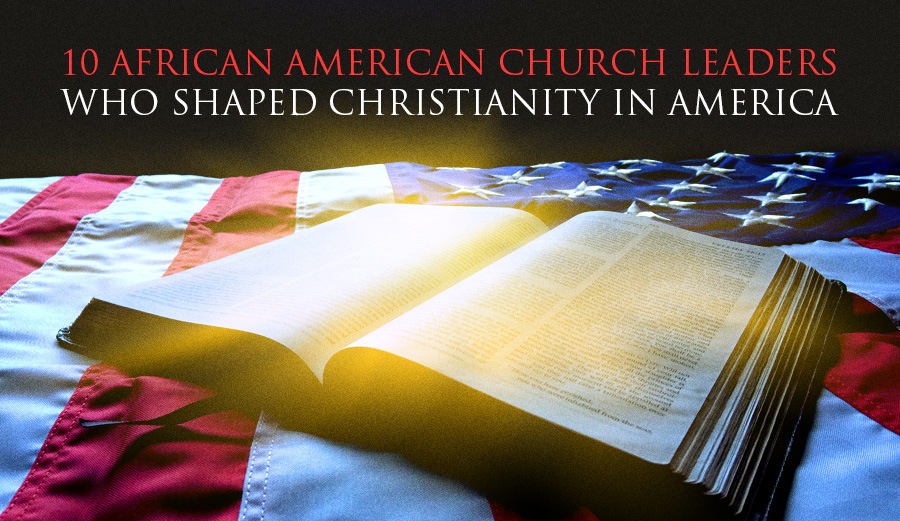The story of redemption is one of reconciliation, both to our God and to our neighbor. Revelation 7:9 says, “After this I looked, and there before me was a great multitude that no one could count, from every nation, tribe, people and language, standing before the throne and before the Lamb. They were wearing white robes and were holding palm branches in their hands.” It’s an eternity that casts off the pride of Babel and the false perception of Christ’s triumphal entry. In Heaven, our differences don’t divide us.
Black History Month: 10 African American Church Leaders Who Shaped Christianity in America
Our fallen history of America is tinged in division, like every country. I guess that’s why it’s helpful for me to keep the end in mind, that Jesus indeed makes all things new, both now and with completeness in eternity. The plight of African Americans is a massive scar. It is only with the hope given by Christians that slavery ever ended. Christians abolished slave trading in the British Empire with Wilberforce ending its global trade in 1806. Christians rallied behind the Truth of a Gospel for all people with Charles Finney’s preaching in the Second Great Awakening. Black, white, Indian, male, female – he opened the tent revivals of the 1840s to anyone and everyone. And, it was Christians who protested slavery loudly through the quiet work of Harriet Tubman’s underground railroad and the stomping impact of Abraham Lincoln’s emancipation.
Black History Month highlights the contributions of black Americans, there is much to celebrate even in a past full of evil. As you teach your staff and congregation during Black History Month, consider reflecting on these 10 African Americans who helped shape Christianity in America. Their testimonies are inspiring.
Harry Hosier (1750–May 1806)
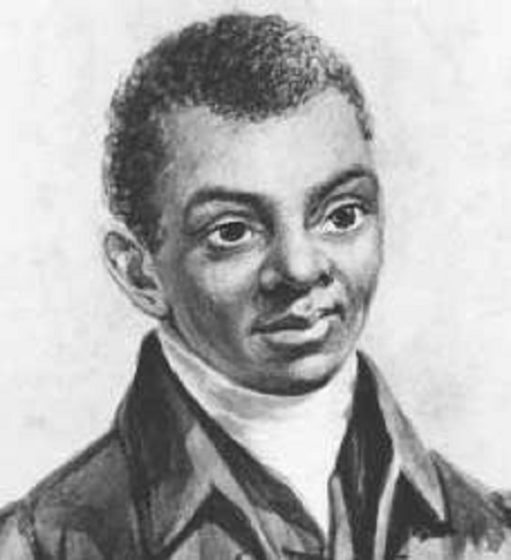 He was known as Black Harry and heralded to be one of the best preachers around. Born in North Carolina and freed in Maryland around the end of the Revolutionary War, Harry would be the first to preach to a white audience, in part because his delivery was so impressive. The fact he was illiterate makes his ability all the more striking. He traveled with Francis Asbury, the notable leader of American Methodism, preaching to great applause and with great conviction. His famous sermon, “The Barren Fig Tree” (Luke 13:6-9) is considered the first formal sermon given by an African American in America. He summed up his work this way, “I sing by faith, pray by faith, preach by faith, and do every thing by faith.”
He was known as Black Harry and heralded to be one of the best preachers around. Born in North Carolina and freed in Maryland around the end of the Revolutionary War, Harry would be the first to preach to a white audience, in part because his delivery was so impressive. The fact he was illiterate makes his ability all the more striking. He traveled with Francis Asbury, the notable leader of American Methodism, preaching to great applause and with great conviction. His famous sermon, “The Barren Fig Tree” (Luke 13:6-9) is considered the first formal sermon given by an African American in America. He summed up his work this way, “I sing by faith, pray by faith, preach by faith, and do every thing by faith.”
Absalom Jones (November 7, 1746 – February 13, 1818)
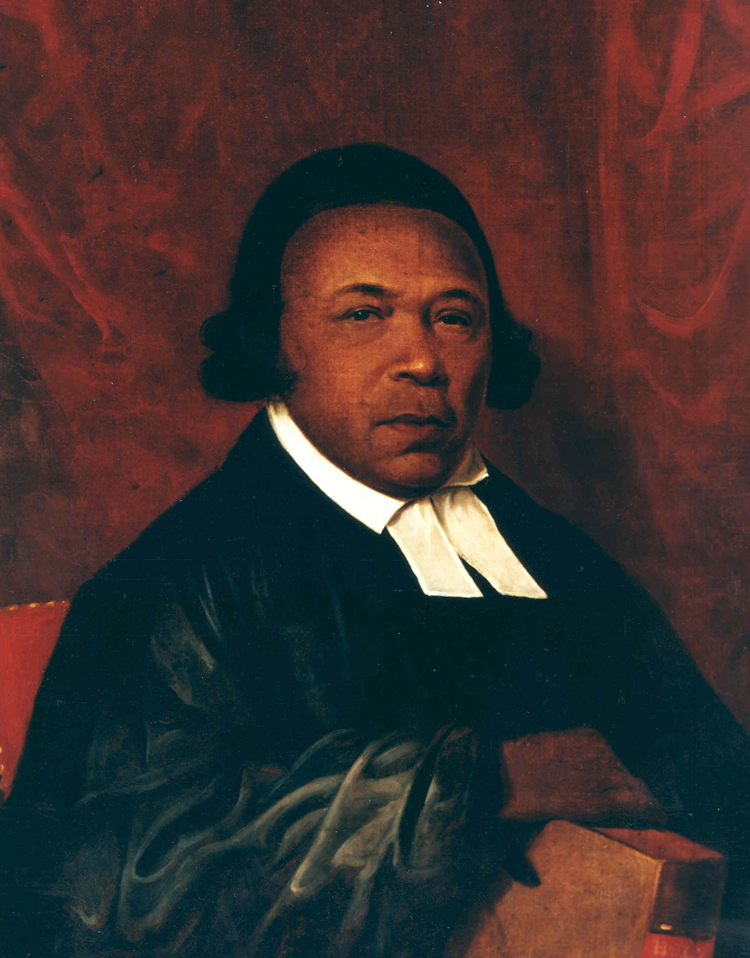 In 1804, Absalom Jones became the first African American priest in the Episcopal Church. He was instrumental in helping Richard Allen, a lifelong friend, begin the African Methodist Episcopal Church (AME) denomination. He and Allen also began the Free African Society with the objective to help both widows and orphans. On two occasions in the 1790s, he petitioned Congress and the President about opposing slavery. When Yellow Fever broke out in Philadelphia in 1793, it was Jones and Allen who worked alongside Dr. Benjamin Rush (fellow Christian and famed signer of the Declaration and friend to both Adams and Jefferson) to nurse those who were sick back to health. Today, Jones is remembered with a feast day on the Episcopal Church calendar.
In 1804, Absalom Jones became the first African American priest in the Episcopal Church. He was instrumental in helping Richard Allen, a lifelong friend, begin the African Methodist Episcopal Church (AME) denomination. He and Allen also began the Free African Society with the objective to help both widows and orphans. On two occasions in the 1790s, he petitioned Congress and the President about opposing slavery. When Yellow Fever broke out in Philadelphia in 1793, it was Jones and Allen who worked alongside Dr. Benjamin Rush (fellow Christian and famed signer of the Declaration and friend to both Adams and Jefferson) to nurse those who were sick back to health. Today, Jones is remembered with a feast day on the Episcopal Church calendar.
Richard Allen (February 14, 1760 – March 26, 1831)
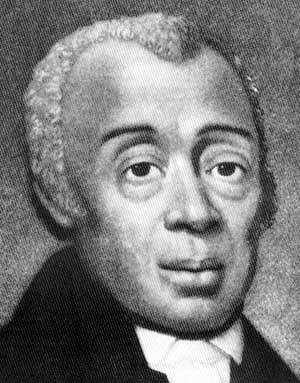 Richard Allen opened the first African Methodist Episcopal Church (AME) in Philadelphia in 1794. The bewildering part of the story is that he never wanted to open a church separate from where he was a preacher at St. George’s Methodist Episcopal Church. He was restricted to early morning services but as the number of black congregants became larger, the church leadership designated Allen’s service to a different place. He resented the move as bigoted and started what would become Mother Bethel African Methodist Episcopal Church today. It’s the oldest property to be owned continuously by African Americans. Today the AME denomination has 7,000 churches and 3.5 million members.
Richard Allen opened the first African Methodist Episcopal Church (AME) in Philadelphia in 1794. The bewildering part of the story is that he never wanted to open a church separate from where he was a preacher at St. George’s Methodist Episcopal Church. He was restricted to early morning services but as the number of black congregants became larger, the church leadership designated Allen’s service to a different place. He resented the move as bigoted and started what would become Mother Bethel African Methodist Episcopal Church today. It’s the oldest property to be owned continuously by African Americans. Today the AME denomination has 7,000 churches and 3.5 million members.
Sojourner Truth (1797 – November 26, 1883)
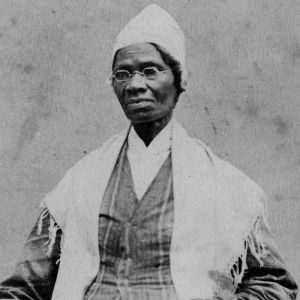 She knew that God’s call was on her life, to speak truth into a broken world. She wanted to break down the institution of slavery and work on behalf of the rights of women. With the help of famed abolitionist, William Lloyd Garrison, Truth published The Narrative of Sojourner Truth: A Northern Slave in 1850, a book that would provide some financial stability and a story for the noble cause against slavery. As a Methodist who knew God’s resurrection power, Sojourner pinned this hymn she sang as an itinerant preacher, “It was early in the morning–it was early in the morning, Just at the break of day– When he rose–when he rose–when he rose, And went to heaven on a cloud.”
She knew that God’s call was on her life, to speak truth into a broken world. She wanted to break down the institution of slavery and work on behalf of the rights of women. With the help of famed abolitionist, William Lloyd Garrison, Truth published The Narrative of Sojourner Truth: A Northern Slave in 1850, a book that would provide some financial stability and a story for the noble cause against slavery. As a Methodist who knew God’s resurrection power, Sojourner pinned this hymn she sang as an itinerant preacher, “It was early in the morning–it was early in the morning, Just at the break of day– When he rose–when he rose–when he rose, And went to heaven on a cloud.”
Alexander Crummell (March 3, 1819 – September 10, 1898)
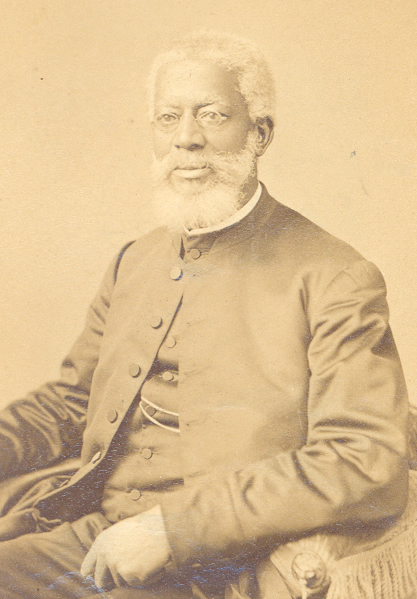 A scholar and an Episcopal priest, Crummell went to Cambridge University with support from abolitionists. He spent the next 20 years in Liberia as a missionary. He returned to the US in 1872, and by 1875 he started St. Luke’s Episcopal Church, the first independent black Episcopal church in Washington, DC. He led the congregation until 1894. His work in Pan-Africanism and the abolition of slavery were both fused by the Christian call for redemption and grace. In a sermon titled “Building Men” (I Cor. 3:10), he says, “There are people who would fain convince themselves that it is possible to stand in a place of utter indifference in spiritual matters; devoid of all moral responsibility. Never was there a more deceptive error framed by Satan for human ruin. There is no neutral line between the two great principles of good and evil; no intermediate point or party between the strong hosts of goodness, on the one hand, and the leagued bands of wrong and evil, on the other. In the universe of God there are two great principles ever antagonistic, one to the other; that which conserves, and that which destroys.”
A scholar and an Episcopal priest, Crummell went to Cambridge University with support from abolitionists. He spent the next 20 years in Liberia as a missionary. He returned to the US in 1872, and by 1875 he started St. Luke’s Episcopal Church, the first independent black Episcopal church in Washington, DC. He led the congregation until 1894. His work in Pan-Africanism and the abolition of slavery were both fused by the Christian call for redemption and grace. In a sermon titled “Building Men” (I Cor. 3:10), he says, “There are people who would fain convince themselves that it is possible to stand in a place of utter indifference in spiritual matters; devoid of all moral responsibility. Never was there a more deceptive error framed by Satan for human ruin. There is no neutral line between the two great principles of good and evil; no intermediate point or party between the strong hosts of goodness, on the one hand, and the leagued bands of wrong and evil, on the other. In the universe of God there are two great principles ever antagonistic, one to the other; that which conserves, and that which destroys.”
John Jasper (July 4, 1812 – March 30, 1901)
 John Jasper was an electrifying Baptist preacher from Richmond, Virginia. He rose to prominence as the pastor of the Sixth Mount Zion Baptist Church. People were attracted to his discernment and delivery of Scriptural truth. One of his most famous sermons, “De Sun Do Move”, he tracks through God’s providence as Israel seeks the Promised Land and up to that day recorded in Joshua 10:13. He exegetes the Bible with all the vigor of a scholar but with the heart of a pastor, getting to his final point of God’s awesome plan. “Fellow-sinners in ranks!” he concludes, “Turn your back on Hell, and look toward Heaven! King Jesus cometh! — Fall in ranks! When all his elect shall mount in chariots drawn by winged horses, and be seen going up in the clouds to that blessed abode where all the houses is made of gold and the streets is paved with pearls. Amen.”
John Jasper was an electrifying Baptist preacher from Richmond, Virginia. He rose to prominence as the pastor of the Sixth Mount Zion Baptist Church. People were attracted to his discernment and delivery of Scriptural truth. One of his most famous sermons, “De Sun Do Move”, he tracks through God’s providence as Israel seeks the Promised Land and up to that day recorded in Joshua 10:13. He exegetes the Bible with all the vigor of a scholar but with the heart of a pastor, getting to his final point of God’s awesome plan. “Fellow-sinners in ranks!” he concludes, “Turn your back on Hell, and look toward Heaven! King Jesus cometh! — Fall in ranks! When all his elect shall mount in chariots drawn by winged horses, and be seen going up in the clouds to that blessed abode where all the houses is made of gold and the streets is paved with pearls. Amen.”
Harriet Tubman (1822 – March 10, 1913)
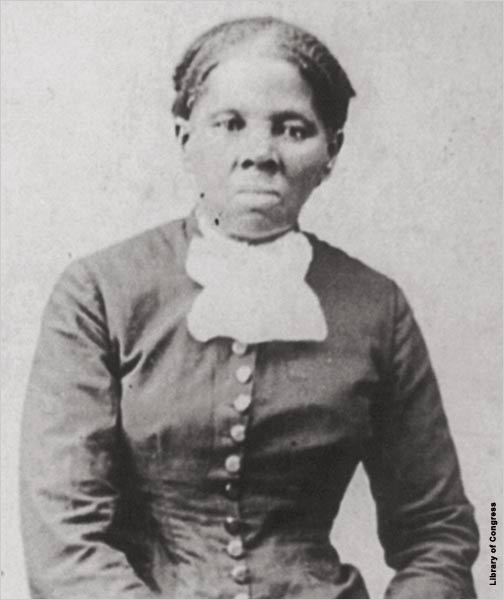 She was called Moses because of her work in successfully exploiting the Underground Railroad to free more than 700 slaves. She was also a cook, nurse, and eventually an armed spy for the Union. She also became an outspoken advocate for women’s rights. Like others during the 1800s, she claimed to have dreams that she took as revelations from God. In fact, she credited all her life to God’s good providence. She said, “‘Twant me, ’twas the Lord. I always told him, ‘I trust to you. I don’t know where to go or what to do, but I expect you to lead me,’ and he always did.”
She was called Moses because of her work in successfully exploiting the Underground Railroad to free more than 700 slaves. She was also a cook, nurse, and eventually an armed spy for the Union. She also became an outspoken advocate for women’s rights. Like others during the 1800s, she claimed to have dreams that she took as revelations from God. In fact, she credited all her life to God’s good providence. She said, “‘Twant me, ’twas the Lord. I always told him, ‘I trust to you. I don’t know where to go or what to do, but I expect you to lead me,’ and he always did.”
William Seymour (May 2, 1870 – September 28, 1922)
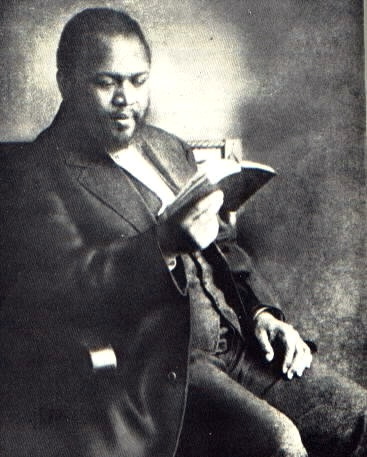 Seymour is synonymous with the Azusa Street Revival in Los Angeles, where God used him mightily to bring about what we know as the Pentecostal movement. He was from Louisiana, baptized Catholic and grew up attending a Baptist church. He received modest training in the Holiness tradition but in Los Angeles the church leadership rejected Seymour’s emphasis on speaking in tongues. He began a Bible study that would become the Azusa Street Revival. It was April 9, 1906 and the Spirit of God fell on the group with fire, tongues, and other signs. Today, most Protestant Pentecostals, which number in the hundreds of millions trace their lineage to Azusa.
Seymour is synonymous with the Azusa Street Revival in Los Angeles, where God used him mightily to bring about what we know as the Pentecostal movement. He was from Louisiana, baptized Catholic and grew up attending a Baptist church. He received modest training in the Holiness tradition but in Los Angeles the church leadership rejected Seymour’s emphasis on speaking in tongues. He began a Bible study that would become the Azusa Street Revival. It was April 9, 1906 and the Spirit of God fell on the group with fire, tongues, and other signs. Today, most Protestant Pentecostals, which number in the hundreds of millions trace their lineage to Azusa.
Martin Luther King Jr. (January 15, 1929 – April 4, 1968)
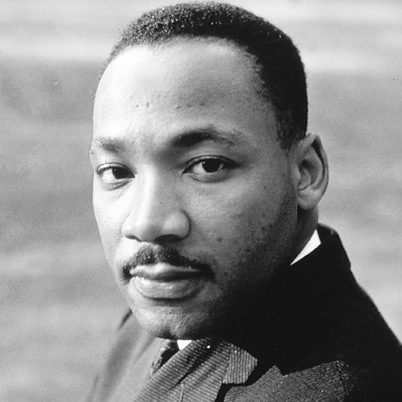 His dream was a pastor’s dream. King is likely the most celebrated leader because of the tumultuous times of the 1960s and because he was murdered in the prime of a movement that was first and foremost Bible-based and church ordained. MLK stood on the shoulders of the ones listed here and so many others who were white and black in color and who knew their Bibles well enough to love their neighbors, no matter the color of their skin.
His dream was a pastor’s dream. King is likely the most celebrated leader because of the tumultuous times of the 1960s and because he was murdered in the prime of a movement that was first and foremost Bible-based and church ordained. MLK stood on the shoulders of the ones listed here and so many others who were white and black in color and who knew their Bibles well enough to love their neighbors, no matter the color of their skin.
Thomas Dorsey (July 1, 1899 – January 23, 1993)
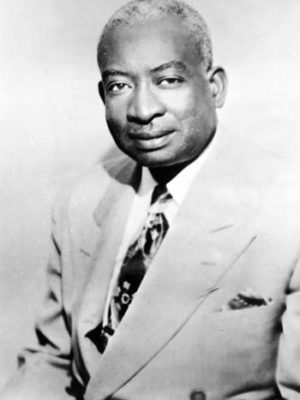 If you want to know the father of black gospel music, Thomas Dorsey is it. Born the son of a Baptist minister and a music teacher in Georgia, he knew both faith and song from an early age. The family moved from rural Georgia to the city of Chicago which gave Dorsey the opportunity to study music at the Chicago College of Composition and Arranging. He led jazz bands in speakeasies before he honed in on God’s real plan for his life. He established the first independent publisher of black Gospel music and founded the National Convention of Gospel Choirs and Choruses. Among his influential songs is “Precious Lord”, written in the grief following the death of his first wife in childbirth in 1932 and known as Martin Luther King Jr.’s favorite song.
If you want to know the father of black gospel music, Thomas Dorsey is it. Born the son of a Baptist minister and a music teacher in Georgia, he knew both faith and song from an early age. The family moved from rural Georgia to the city of Chicago which gave Dorsey the opportunity to study music at the Chicago College of Composition and Arranging. He led jazz bands in speakeasies before he honed in on God’s real plan for his life. He established the first independent publisher of black Gospel music and founded the National Convention of Gospel Choirs and Choruses. Among his influential songs is “Precious Lord”, written in the grief following the death of his first wife in childbirth in 1932 and known as Martin Luther King Jr.’s favorite song.
We are certainly surrounded by a great cloud of witnesses, so, “let us also lay aside every weight, and sin which clings so closely, and let us run with endurance the race that is set before us, looking to Jesus, the founder and perfecter of our faith, who for the joy that was set before him endured the cross, despising the shame, and is seated at the right hand of the throne of God” (Hebrews 12:1-2).

